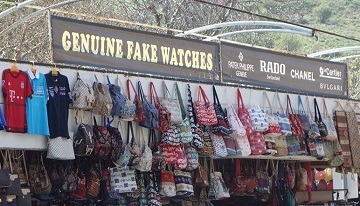There’s a lot of appeal in the street markets that you come across in some developing countries – where else would you find hugely discounted products with high end brand names? And of course there is no pretence that they are the real deal - what does it matter if those items fall to pieces or stop working in a few months? The trouble is that it’s not just merchandise that’s counterfeited, it is life-saving medicines too. While most of us find it hard to believe that some person or persons would wish to make money from this miserable trade, according to the World Health Organization (WHO) it has been going on for centuries and, thanks to globalisation and the online marketplace, it’s booming.
What are we referring to?
The definition of the bogus medications has recently been expanded and it now covers those which are: substandard/ spurious/ falsely-labelled/ falsified/ counterfeit medical products (or SSFFC). The WHO places them into 3 classifications:
· ‘Substandard medical products: Also called “out of specification”, these are authorized medical products that fail to meet either their quality standards or their specifications, or both.
· Unregistered/unlicensed medical products: Medical products that have not undergone evaluation and/or approval by the national or regional regulatory authority for the market in which they are marketed/distributed or used, subject to permitted conditions under national or regional regulation and legislation.
· Falsified medical products: Medical products that deliberately/fraudulently misrepresent their identity, composition or source.’ http://www.who.int/medicines/regulation/ssffc/definitions/en/
WHO’s keeping tabs on them
The Global Surveillance and Monitoring System for substandard and falsified medical products (GSMS) was established by the WHO four years ago, providing a central agency for the receipt and compilation of information on new and previously identified suspect products – an ‘international data exchange’. In the past this has enabled countries to cross-reference the details, and even the images, of dangerous medications which had caused harm in one country and confiscate them before more damage could be done in their own population. Another function of the GSMS is to broadcast alerts when they are notified of deficient or false products.
The Executive Summary of the GSMS report released last month stresses that the SSFFC products that they are aware of are only the tip of a very large iceberg: 1,500 cases since 2013 and ‘some cases involve millions of doses of medicines, others a single dose’. What’s more, according to the report, they cover ‘everything from cancer medicines to contraception, from antibiotics to vaccines. They are not confined to high-value medicines or well-known brand names; antimalarials and antibiotics are the two most frequently reported medicines in the database.’
What that means…
At the very least, taking a counterfeit medication will mean that you have wasted time and money.
But the consequences can be so much worse as pointed out in a WHO factsheet:
· It could result in a worsening or prolonging of the condition which caused you to take the medication.
· It can lead to drug resistance – a disaster is already unfolding as we run out of effective antibiotics and malaria treatments.
· The ingredients of the drug/ medication could be toxic and cause you harm or even be fatal.
Of course you don’t even need your passport to access some overseas medications – they can often be purchased online. In this instance we found some useful advice from the Therapeutic Goods Administration if you are considering sourcing your medications this way. But when it comes to buying medications when you are travelling overseas, Smartraveller advises: 'If you need to purchase medication at your destination, be careful not to buy imitation or counterfeit medications and prescription drugs, and always check the strength of a medication with a doctor. Be aware that packaging and labelling may be similar to those available in Australia, but the strength and active ingredients can vary from country to country.'
So, if you can, it would be so much safer and more predictable to take what you need with you (with a doctor's letter certifying the medications are prescribed for the traveller's use), or in the case of vaccines, have them here in Australia before departure through clinics such as Travelvax.
Also, be aware that some countries have limits on the importation of some types and amounts of medications. Check with the embassies or consulates here in Australia well in advance of leaving.
More information on taking PBS medications overseas can be found through the Department of Health or by calling the PBS information line on 1800 020 613. And if you would like to know more about travelling with medication, click on this link to the Travelvax website, try the Department of Human Services website or call the Overseas Drug Diversion information line on 1800 500 147.

